dark signal non-uniformity (system without correction) at 5 s integration time and 25°C ambient temperature
LMK camera calibration
The way to a calibrated ILMD/ICMD system
An ILMD/ICMD (short IxMD) systems consist of a digital camera, optical filters for spectral matching, (changeable) lenses, and additional neutral density filters. The aim is to measure the two-dimensional projection of the luminance/color distribution of a device under test (DUT) with or without a geometrical calibration.
For the data evaluation, all non-ideal properties of the system need to be corrected, and one needs a relation to internationally agreed standards (e.g., luminance), usually using calibration factors. For this purpose, the software controlling the IxMD needs a model and model parameters. Estimating the model parameter is the aim of the individual adjustment of a measuring system. With the additional calibration, the success of the adjustment will be checked and stated, including the associated measurement uncertainty verified by the measurement of defined index values.
The following measurements are made individually for every system and lens. Only a few measurements are system specific and can be done once for a system type.
f3,0 — Dark signal properties
Measurement and characterization of the dark signal properties of a system, including dark signal, dark signal non-uniformity, and faulty pixels.
Apply all the dark signal properties for correction and calculate the detection limit (relative or using a common calibration factor).
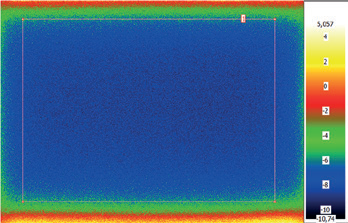
f3,1 — Basic camera and sensor data
Measurements of basic camera and sensor data (not related to lenses) using the Photon Transfer Method (PTM) (EMVA1288, 2016) to estimate the system transfer factor kSys, the basic noise σ0 and the full well capacity QF.
Furthermore, the non-linearity over different integration times with selected luminance values is measured and used for correction later on.
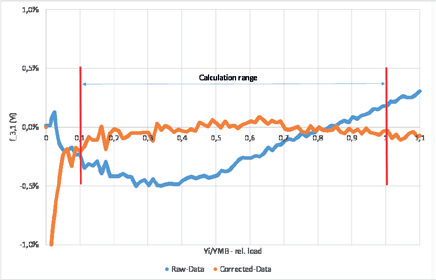
Measurement with and without non-linearity correction
for a system
f21, f22 — Lens shading
Flat field measurements with large homogenous objects using specialized integrating spheres and raster measurements using small homogenous objects and a moving stage.
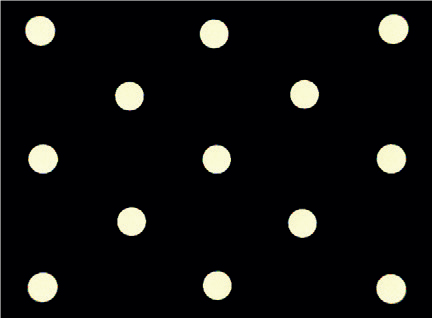
Raster measurement for the characterization of the lens shading to measure the f22 uniformity index after using all measured corrections.
fAdj — Adjustment
Measure the calibration factor for each color filter.
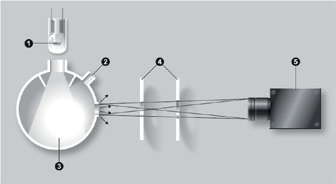
Measurement setup according to DIN5032-10 for the luminance adjustment of an ILMD
ΔC — Color calibration
Measure different known light sources (e.g., LED-based L³ standards) and calculate a transformation matrix for the camera color space (4 to 8 filters) to the standard color space of the CIE 1931 standard colorimetric observer.
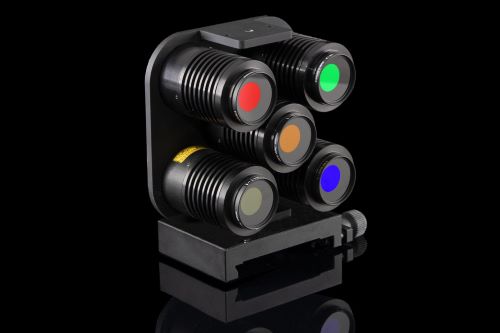
Multicolor calibration with different L³ standards. Apply the transformation, perform test measurements and calculate color differences ΔC
Lens and filter distortion correction
Measure the distortion caused by the color filters and lenses and calculate correction information

Measurement grid of a fisheye lens to calculate the angular position for every pixel
f1', f6,T', f12, f21, f24, f25, f29, — Further characterization
After finishing all the measurements used for correction, multiple characterizations are necessary to check the calibrated system.
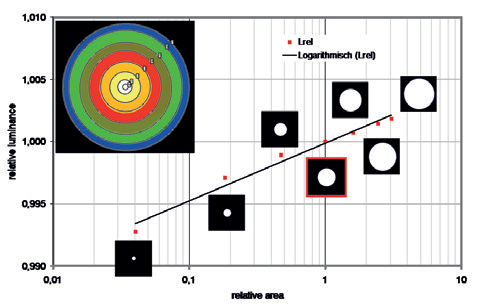
Measurement results for the size-of-source effect stated with the characteristic value f29